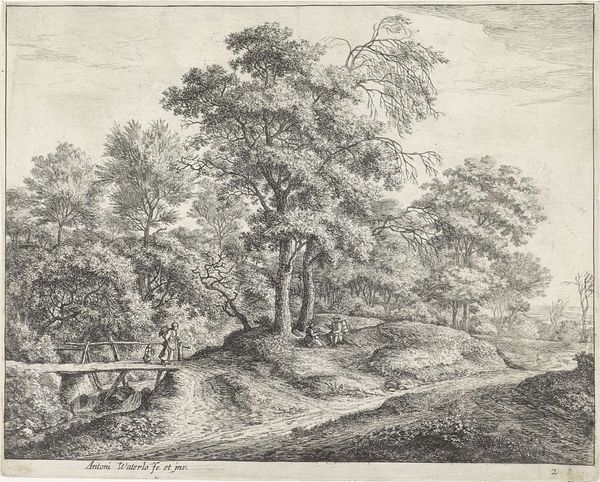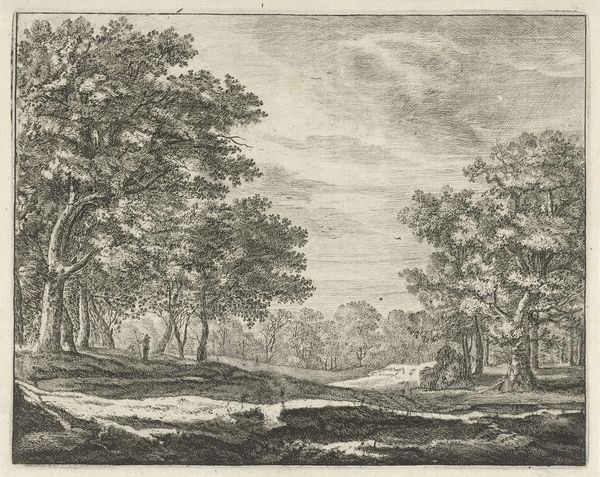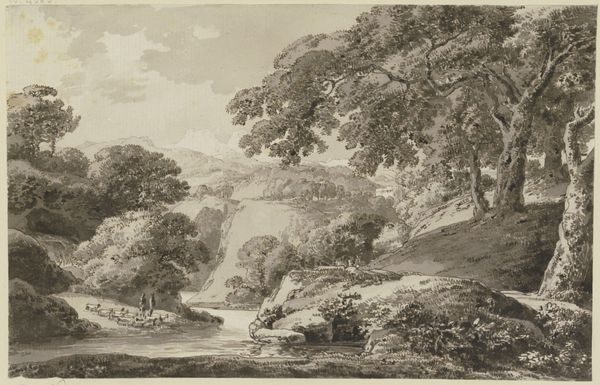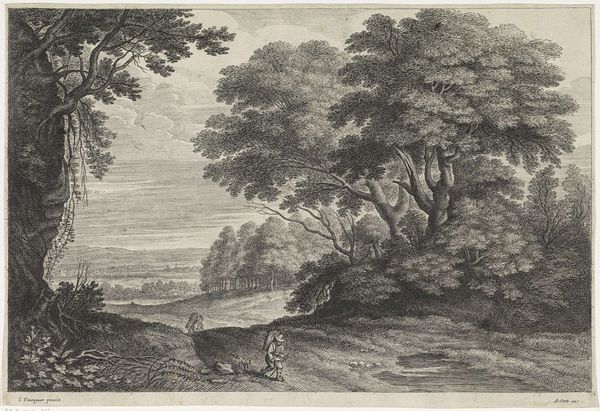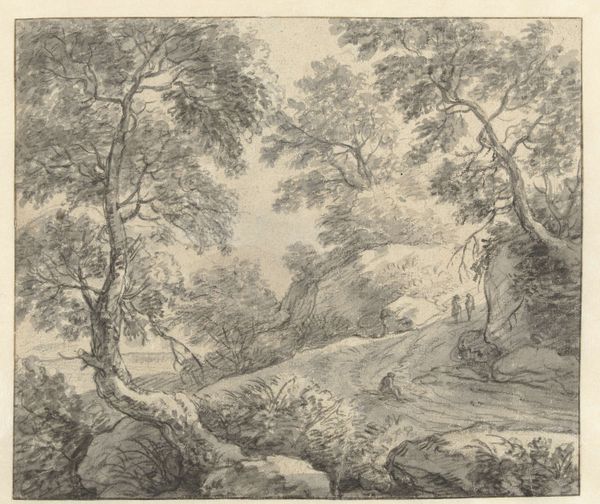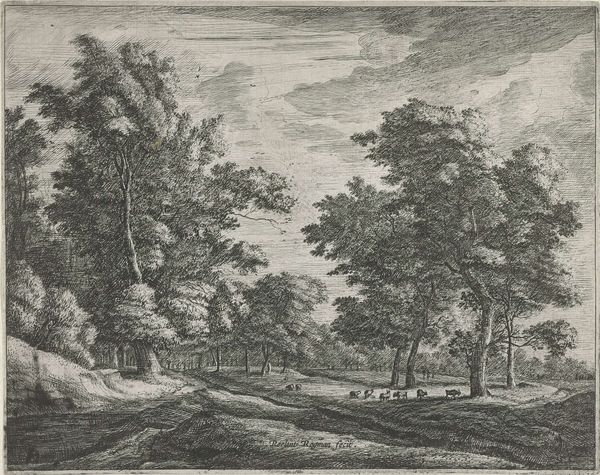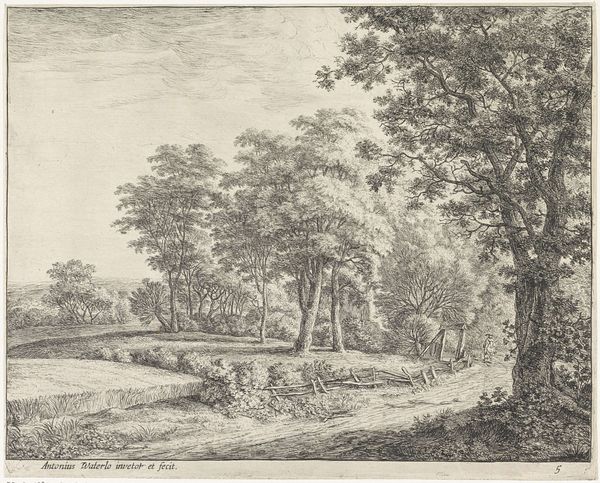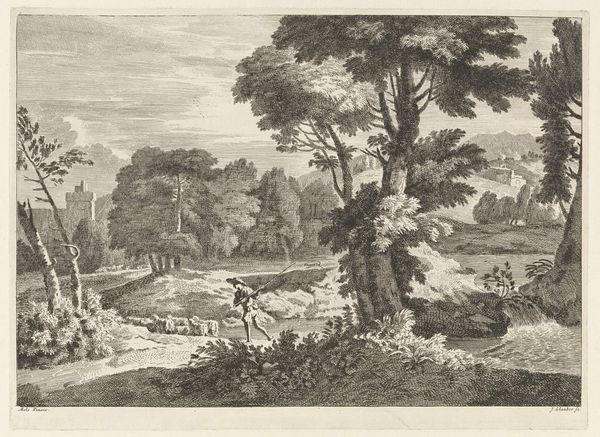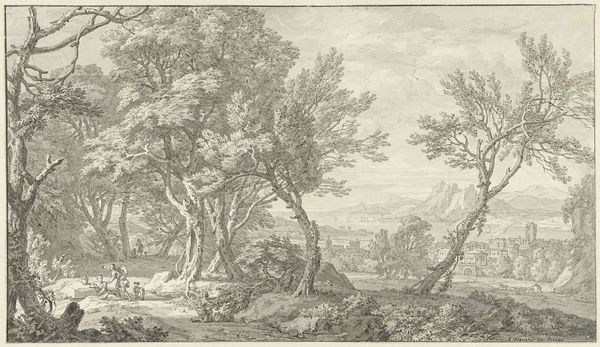
engraving
#
baroque
#
landscape
#
figuration
#
genre-painting
#
engraving
Dimensions: height 221 mm, width 325 mm
Copyright: Rijks Museum: Open Domain
This landscape with a man and pack ass was made by Alexander Voet the Younger in the late 17th century, using etching. This intaglio process involves biting lines into a metal plate with acid, inking the plate, and then transferring the image to paper under great pressure. The resulting print is defined by the crispness and clarity of its lines. You can see how Voet uses this technique to create a sense of depth and detail, from the dense foliage of the trees to the distant horizon. But etching isn't just a means of representation; it also reflects broader social and economic conditions. The relative ease of printmaking allowed for the wider distribution of images, catering to a growing market for art among the middle classes. At the same time, it relied on the labor of skilled artisans who prepared the plates and operated the presses. This landscape, therefore, is not just a depiction of nature, but a product of its time, shaped by the dynamics of production and consumption. So next time you look at an etching, consider not just what it shows, but how it was made, and how this process has imbued the artwork with social significance.
Comments
No comments
Be the first to comment and join the conversation on the ultimate creative platform.

